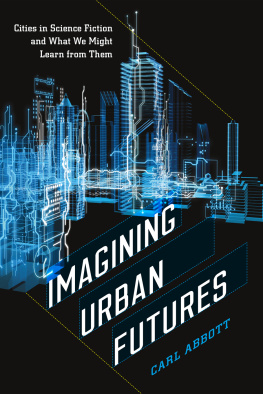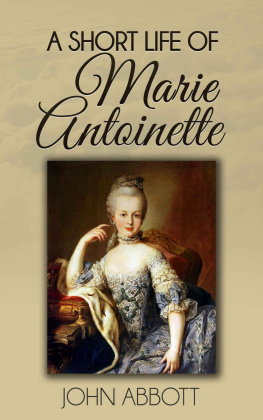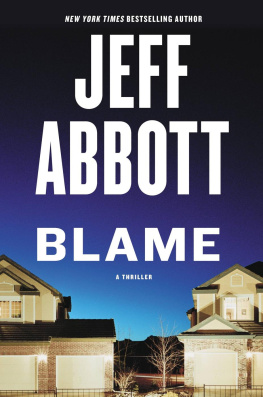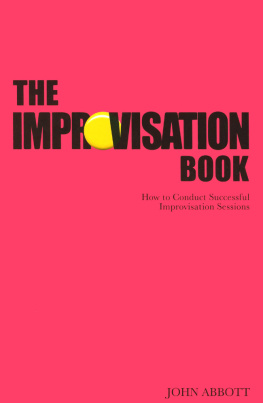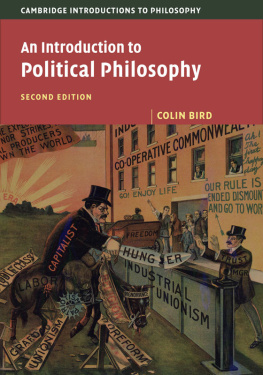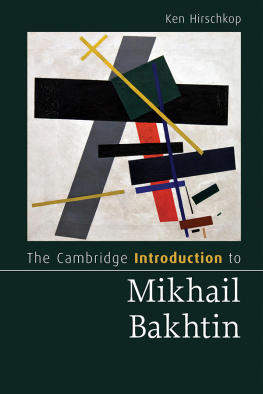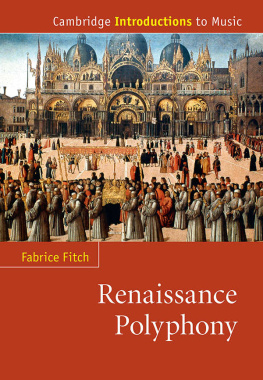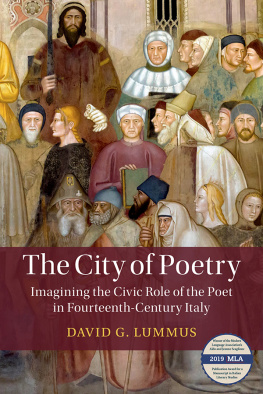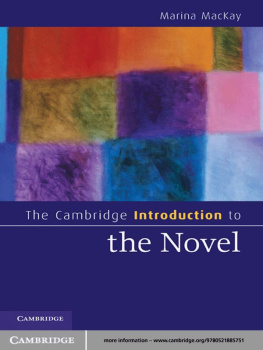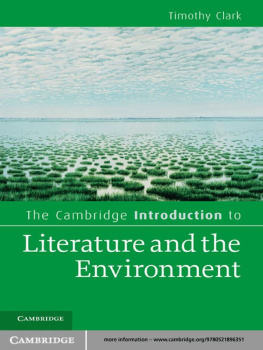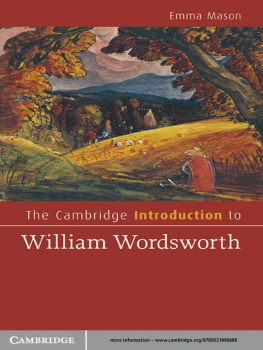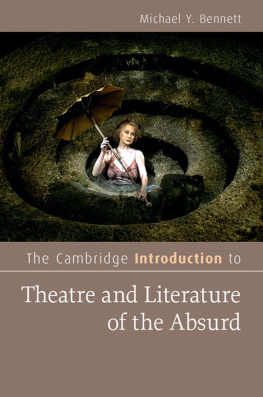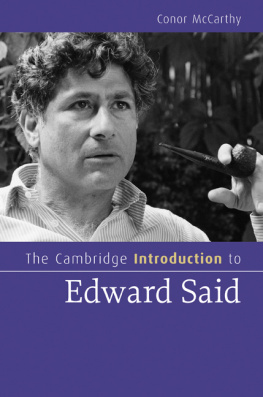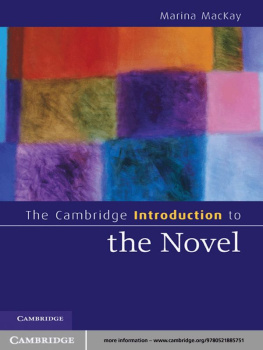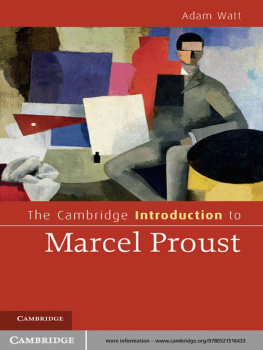Abbott - The Cambridge Introduction to Narrative (Cambridge Introductions to Literature)
Here you can read online Abbott - The Cambridge Introduction to Narrative (Cambridge Introductions to Literature) full text of the book (entire story) in english for free. Download pdf and epub, get meaning, cover and reviews about this ebook. year: 2008, publisher: Cambridge University Press, genre: Children. Description of the work, (preface) as well as reviews are available. Best literature library LitArk.com created for fans of good reading and offers a wide selection of genres:
Romance novel
Science fiction
Adventure
Detective
Science
History
Home and family
Prose
Art
Politics
Computer
Non-fiction
Religion
Business
Children
Humor
Choose a favorite category and find really read worthwhile books. Enjoy immersion in the world of imagination, feel the emotions of the characters or learn something new for yourself, make an fascinating discovery.

The Cambridge Introduction to Narrative (Cambridge Introductions to Literature): summary, description and annotation
We offer to read an annotation, description, summary or preface (depends on what the author of the book "The Cambridge Introduction to Narrative (Cambridge Introductions to Literature)" wrote himself). If you haven't found the necessary information about the book — write in the comments, we will try to find it.
The Cambridge Introduction to Narrative (Cambridge Introductions to Literature) — read online for free the complete book (whole text) full work
Below is the text of the book, divided by pages. System saving the place of the last page read, allows you to conveniently read the book "The Cambridge Introduction to Narrative (Cambridge Introductions to Literature)" online for free, without having to search again every time where you left off. Put a bookmark, and you can go to the page where you finished reading at any time.
Font size:
Interval:
Bookmark:
What is narrative? How does it work and how does it shape our lives and the texts we read? H. Porter Abbott emphasizes that narrative is found not just in literature, film, and theater, but everywhere in the ordinary course of peoples lives. This widely used introduction, now thoroughly revised, is informed throughout by recent developments in the field and includes two new chapters. With its lucid exposition of concepts and suggestions for further reading, this book is not only an excellent introduction for courses focused on narrative but also an invaluable resource for students and scholars across a wide range of fields, including literature and drama, film and media, society and politics, journalism, autobiography, history, and still others throughout the arts, humanities, and social sciences.
H. Porter Abbott is Professor Emeritus in the Department of English at the University of California, Santa Barbara. He is the author of The Fiction of Samuel Beckett: Form and Effect, Diary Fiction: Writing as Action, Beckett Writing Beckett: the Author in the Autograph , and editor of On the Origin of Fictions: Interdisciplinary Perspectives , a special issue of the journal SubStance .
This series is designed to introduce students to key topics and authors. Accessible and lively, these introductions will also appeal to readers who want to broaden their understanding of the books and authors they enjoy.
- Ideal for students, teachers, and lecturers
- Concise, yet packed with essential information
- Key suggestions for further reading
For a list of titles published in the series, please see .

This publicaion is in copyright. Subject to statutory exception and to the provisions of relevant collective licensing agreements, no reproduction of any part may take place without the written permission of Cambridge University Press.
Cambridge University Press has no responsibility for the persistence or accuracy of URLs for external or third-party internet websites referred to in this Book, and does not guarantee that any content on such websites is, or will remain, accurate or appropriate.
For Anita (es tevi m  lu)
lu)
The author and publisher are grateful to be able to include the following illustrations.
The purpose of this book is to help readers understand what narrative is, how it is constructed, how it acts upon us, how we act upon it, how it is transmitted, how it changes when the medium or the cultural context changes, and how it is found not just in the arts but everywhere in the ordinary course of peoples lives, many times a day. This last point is especially important. We are all narrators, though we may rarely be aware of it. A statement as simple as I took the car to work qualifies as narrative. As we seek to communicate more detail about events in time, we become involved in increasingly complex acts of narration. We are also the constant recipients of narrative: from newspapers and television, from books and films, and from friends and relatives telling us, among other things, that they took the car to work. Therefore, though much of this book is devoted to narrative in literature, film, and drama, it grounds its treatment of narrative by introducing it as a human phenomenon that is not restricted to literature, film, and theater, but is found in all activities that involve the representation of events in time. In its early chapters, the book moves back and forth between the arts and the everyday. At the same time, the book honors the fact that out of this common capability have come rich and meaningful narratives that we come back to and reflect on repeatedly in our lives.
This book is descriptive rather than prescriptive; it seeks to describe what happens when we encounter narrative, rather than to prescribe what should happen. All along the way questions arise that are very much alive in current work on narrative. These are often tough issues, and, with a few important exceptions (as for example the definition of narrative that I employ), I try to keep these issues open. In organization, the book introduces the subject of narrative by moving outward from simplicity to complexity, from the component parts of narrative in deals with narration and the key role of the narrator.
s treatment of three fundamentally different ways of reading that we all engage in: intentional, symptomatic, and adaptive. The differences between them are important and bring in their wake different understandings of what we mean by meaning in narrative.
, I look at the ways in which narrative can also be an instrument by which storytellers and readers seek to negotiate the claims of competing and often intractable conflicts. Stories, for example, that are told over and over again (cultural masterplots) are often efforts to settle conflicts which are deeply embedded in a culture.
In this book, I have endeavored to avoid writing another anatomy of narrative, of which there are fine examples available in print (Genette, ; Prince, 1987). Instead, I have sought at all times to restrict focus to the most useful concepts and terminology. The field of narratology has produced a great arsenal of distinctions and terms. I have kept my selection of these to a minimum, using only those that are indispensable. These key terms will be found throughout the book and are featured in boldface in the Glossary. As such, this is a foundational book. The tools and distinctions it supplies can be employed across the whole range of nameable interpretive approaches.
Nonetheless, by selecting the terms I do and by treating them the way I do, I have written a study that is bound to be controversial. The simple reason for this is that all studies of narrative are controversial. Despite a burst of energetic and highly intelligent research over the last thirty years and the genuine progress that has been made, there is not yet a consensus on any of the key issues in the study of narrative. If, like language, narrative is an inevitable human capability that we deploy every day without conscious effort, it is also, like language, a complex and fascinating field that often seems to defy our best analytical efforts , secondary texts that seem at this date to have stood the test of time (though for some areas, like hypertext narrative, the works have only barely been tested). At the same time, it is important to acknowledge here the assistance I have received from the work on narrative by many brilliant scholars, among them: M. M. Bakhtin, Mieke Bal, Ann Banfield, Roland Barthes, Emile Benveniste, Wayne Booth, David Bordwell, Edward Branigan, Claude Bremond, Peter Brooks, Ross Chambers, Seymour Chatman, Dorrit Cohn, Jonathan Culler, Jacques Derrida, Umberto Eco, Monika Fludernik, Grard Genette, A. J. Greimas, David Herman, Paul Hernadi, Wolfgang Iser, Roman Jakobson, Fredric Jameson, Robert Kellogg, Frank Kermode, George P. Landow, Claude Lvi-Strauss, Wallace Martin, Scott McCloud, J. Hillis Miller, Bill Nichols, Roy Pascal, Gerald Prince, Vladimir Propp, Peter J. Rabinowitz, Eric Rabkin, David Richter, Paul Ricoeur, Brian Richardson, Robert Scholes, Shlomith Rimmon-Kenan, Marie-Laure Ryan, Saint Augustine, Victor Shklovsky, Franz Stanzel, Tzvetan Todorov, Boris Tomashevsky, Hayden White, and Trevor Whittock.
Font size:
Interval:
Bookmark:
Similar books «The Cambridge Introduction to Narrative (Cambridge Introductions to Literature)»
Look at similar books to The Cambridge Introduction to Narrative (Cambridge Introductions to Literature). We have selected literature similar in name and meaning in the hope of providing readers with more options to find new, interesting, not yet read works.
Discussion, reviews of the book The Cambridge Introduction to Narrative (Cambridge Introductions to Literature) and just readers' own opinions. Leave your comments, write what you think about the work, its meaning or the main characters. Specify what exactly you liked and what you didn't like, and why you think so.

